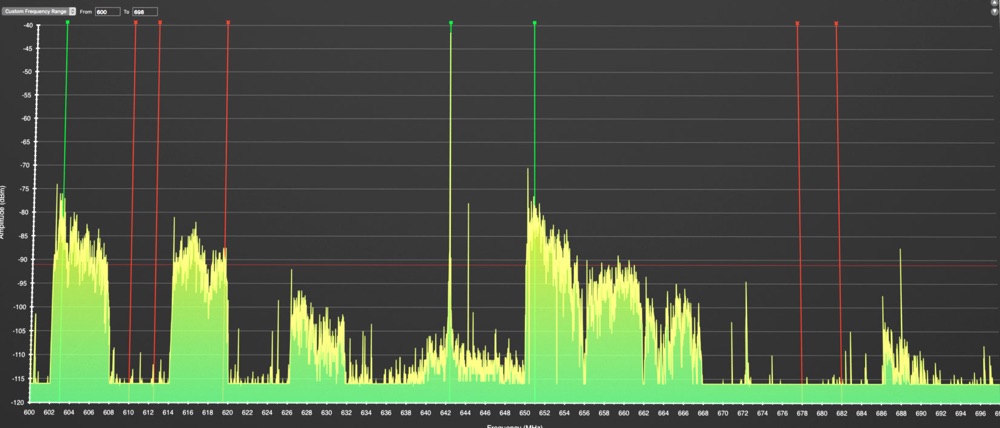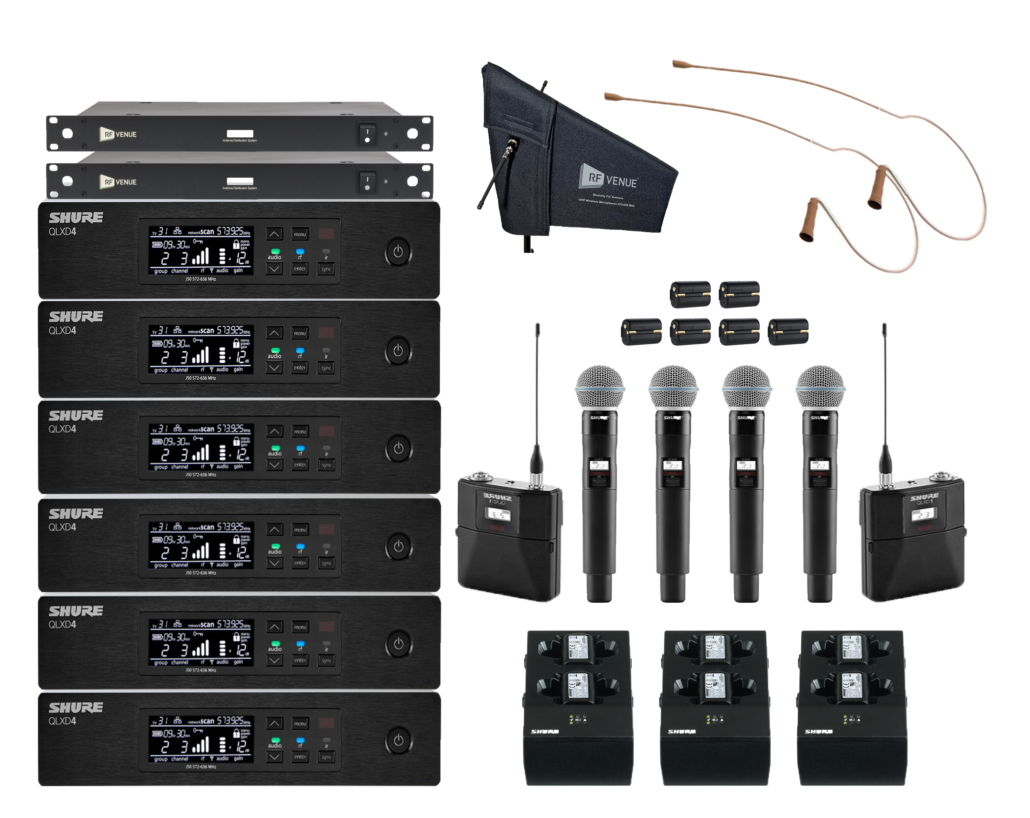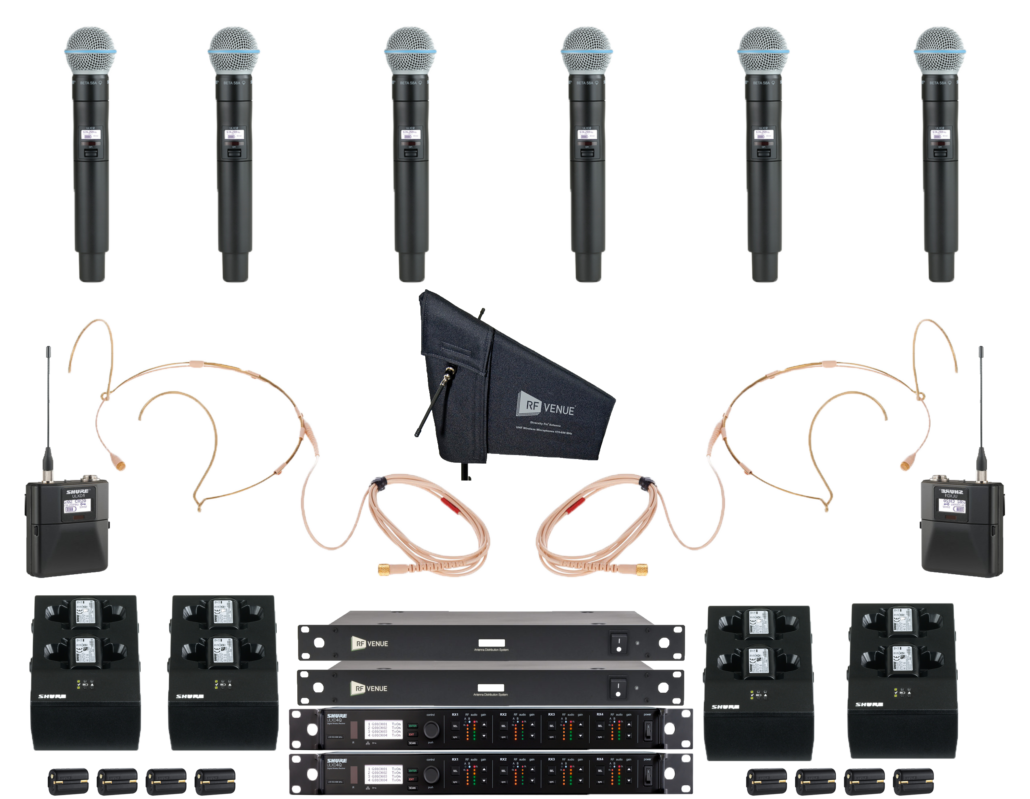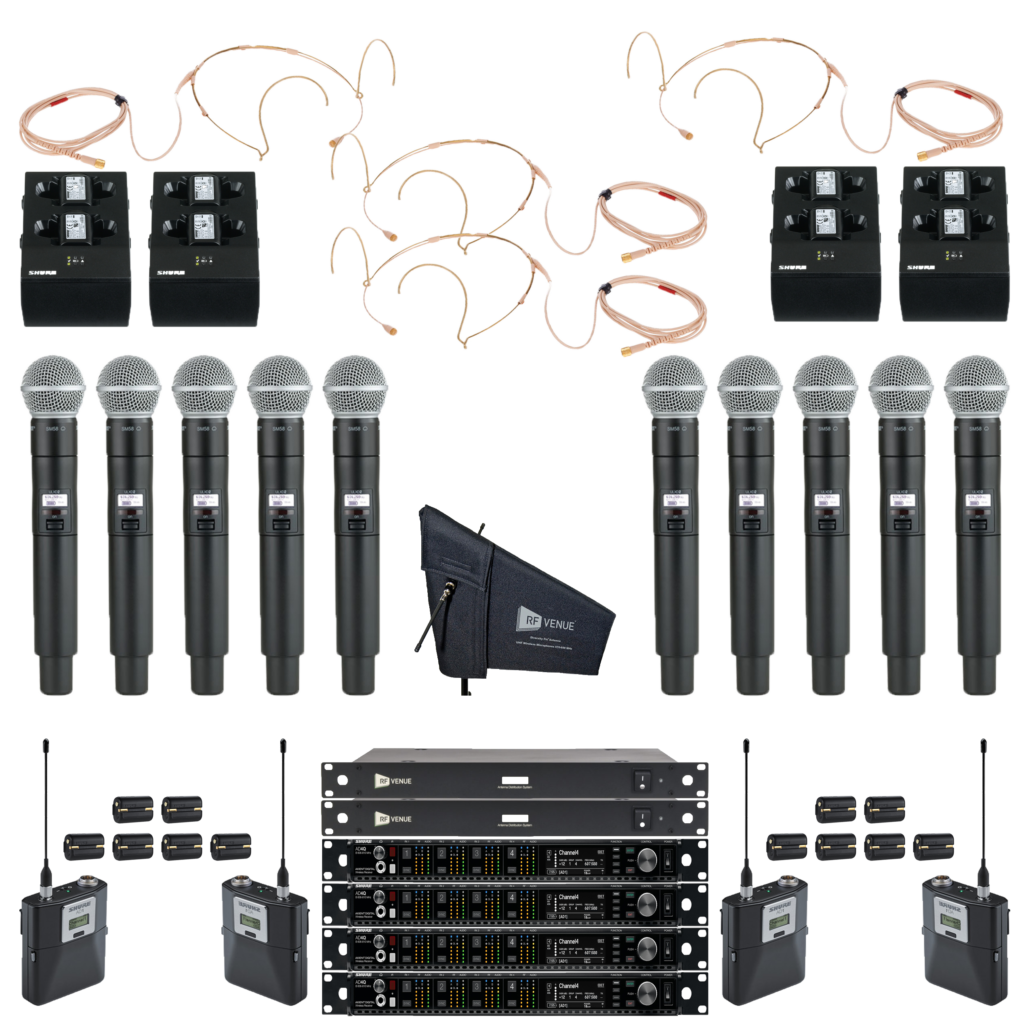Life Cycle Strategy
More than wired microphones, wireless mics experience considerable wear and tear. In order to accommodate internal batteries and reduce weight, handheld wireless mics are made with durable plastics that are more susceptible to wear than their metal wired mic counterparts. Wireless products have battery door, module mic capsules, and switches that all experience wear over their lifetime. When any of these parts become worn and begin to fail, the reliability of the entire system comes into question.
Quality and Useable Life Cycle
In our experience, the quality of the product has a massive impact on the useable life of the wireless system. At $2500 per channel, Shure UHF-R mics could easily give you 12+ years of service. At $250 per channel, the BLX line might give you 3 to 5 years of reliable service.
ACTION: Build a spreadsheet with all your wireless microphones and in-ear systems throughout the facility. Document the make, model, frequency band, channel frequency selected, and the purchase date. If you’ve got systems in the 600 or 700 Mhz bands, then its time to make plans to replace those units in the next budget cycle.
Useable Spectrum Strategy
As the amount of useable RF spectrum for wireless microphones is reduced, it becomes more difficult to coordinate wireless systems as the number of available channel slots is reduced.
From our point of view there are two viable strategies to handle this reality:
1. STEP UP strategy: involves training, equipment and process improvements.
- Get training for your TD and/or key volunteers on RF design and coordination. SynAudCon has an amazing program, here. Shure and Sennheiser have online courses designed to offer the basics.
- Update all of your RF systems to high-quality products designed to handle at least double the number of simultaneous channels you currently need, paying special attention to antenna systems and combiners, implement Band-Pass filters as needed.
- Develop a procedure to validate wireless system frequency coordination monthly and check for interference before each event.
2. CONSOLIDATION strategy:
- Eliminate as many wireless systems as possible on behalf of minimizing the number of systems that need to be maintained and coordinated. Switch all stationary band members to wired mics and in-ears. Put wireless mics only where essential.
- Update your RF systems to industry standard, quality products designed to handle at least double the number of simultaneous channels you currently need and employ the appropriate antenna systems and combiners.
- Develop a procedure to validate wireless system frequency coordination monthly and check for interference before each event.
Total Cost of Ownership
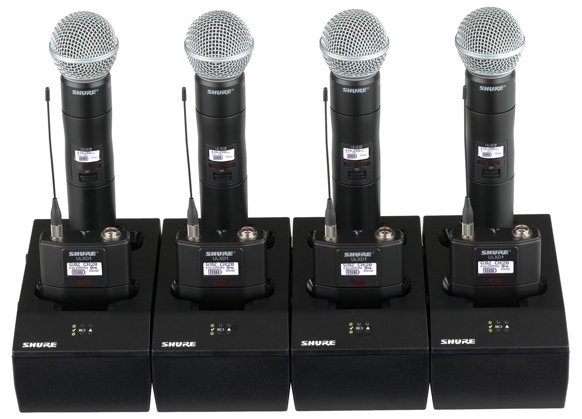 To help you budget for new wireless systems consider the total cost of ownership: A single wireless mic uses at least a set of AA batteries per week. At $0.42/battery that rolls up to $43 of batteries per mic per year. A 4 channel wireless system will cost you $1720 over a 10 year lifespan in batteries. Alternatively, newer systems with rechargeable Li-Ion batteries like the Shure QLX-D and ULX-D offer a more economical solution while reducing wear and tear on the system. The Shure SB900 Rechargeable Battery and the SBC 200 Charger, add about $245 per channel, however over the lifetime of the system will save you $740 in battery costs.
To help you budget for new wireless systems consider the total cost of ownership: A single wireless mic uses at least a set of AA batteries per week. At $0.42/battery that rolls up to $43 of batteries per mic per year. A 4 channel wireless system will cost you $1720 over a 10 year lifespan in batteries. Alternatively, newer systems with rechargeable Li-Ion batteries like the Shure QLX-D and ULX-D offer a more economical solution while reducing wear and tear on the system. The Shure SB900 Rechargeable Battery and the SBC 200 Charger, add about $245 per channel, however over the lifetime of the system will save you $740 in battery costs.
If you have more than 3 wireless mics, the best practice approach to integrating multiple channels is to use an Antenna distributor and venue appropriate antenna system. On average the antenna and distributor run $1000 for every 4 wireless channels.
Here’s how we recommend looking at the total cost of ownership for a 4 channel Shure QLX-D system over 10 years.
4 QLX-D at $1025 each would total $4100
1 RF Venue Distro4 and Diversity Fin Antenna $1320
4 SB900 Rechargeable Batteries, 2 SBC200 Chargers $788
Total: $6208
Purchase Strategy
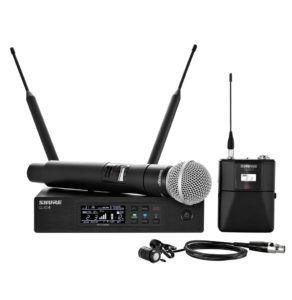 While there are many brands of wireless out there, take a cue from professionals on national tours, and on mission-critical corporate gigs: stick with Shure and Sennheiser products. They have proven to be the most reliable and supportive to the needs of the production industry.
While there are many brands of wireless out there, take a cue from professionals on national tours, and on mission-critical corporate gigs: stick with Shure and Sennheiser products. They have proven to be the most reliable and supportive to the needs of the production industry.
This is a long-term CAPEX expenditure. Quality wireless products start at $1000 per channel and go up. If you handle large productions that need 24 channels of wireless or more, then you’ll want to invest in the best-in-class wireless products, which run in the $2500 per channel range.
There are also tremendous advantages to consolidating your entire facility to one brand of wireless. Often we deploy the same model in every room to simplify operation and improve interoperability.
If upgrading your entire facility presents too much of a financial burden to a single year’s budget, consider focusing on your main room in year one, and other rooms the next year. In the meantime, you may be able to move some of the de-commissioned gear from the main room out to other spaces to improve their operation.
CAPEX Scheduling
If you’ve got wireless units in the 600 or 700 Mhz band you should schedule to replace them in your next budget cycle. Consider also that Shure is offering a 600Mhz wireless rebate program until April 2018.
Help is only a call away!
We would love to help you update your wireless systems. We are direct dealers for Shure, Sennheiser and RF Venue. We would be honored to work with your team to develop a strategy that works for your and takes into consideration your budget constraints.
Please reach out with any questions!
Kungpow Production is an Authorized Shure and RF Venue Dealer. We would be honored to supply you with the products presented below. For you reference, we’ve attached 3 of the many possible package options (tax and installation not included) we’d recommend.

